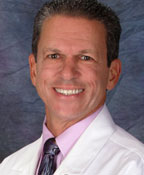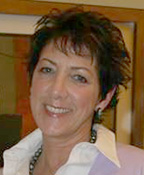 |
|
Harvey Silverman, DMD
|
In the last edition of Silverman On Smiles I addressed how to co-diagnose patients’ elective cosmetic dental needs. In the next 2 articles I am going to share a valuable technique that will teach you how to enhance that process.
Start With A Desire To Provide Non-Invasive Cosmetic Dentistry
I have been privileged to train/coach cosmetic dentists from Miami to Minneapolis and New York to Los Angeles for more than 20 years, helping dentists learn how to be the best cosmetic dentist possible. The lesson I can share with you is that dentists anywhere can incorporate these cosmetic practice-building techniques into their daily routine if they truly have an “eager desire.” What’s your level of interest when it comes to providing the best in elective cosmetic dentistry services to your patients? If it is high, you will like this article. If it needs to be reignited, I hope that this can flame your interest in providing non-invasive elective cosmetic dental services.
Case Study
History lesson—Let’s step back in time for a minute. In 1987 this patient came to my office and wanted to discuss various treatment options available to change her smile. After filling out a smile enhancement form and discussing orthodontia and veneers, she told me that she wanted to have veneers. One of the reasons was because her congenitally missing lateral incisors would ultimately necessitate treatment on her canine teeth even if she had orthodontia.
Look closely at her before photograph and answer the following question. Would you recommend placing veneers on 2, 4, 6, 8 or even 10 teeth?
Lesson No. 1—the answer may not be quite what you expect. Why? Because the answer to the above question is “I do not know. What does the patient want?” Think about that for a minute. As dentists we have been trained to diagnose and then to make appropriate recommendations based upon the clinical findings and the treatment that will best solve our patient’s problem. That is still true, even with a service such as cosmetic dentistry.
However we need to consider one additional, vital element before determining a treatment plan for elective cosmetic cases. First find out what your patient wants to change. That is why I said, “I do not know” in the above paragraph. Once we involve our patient with codiagnosing, we have a better understanding of what other concerns need to be addressed. It is essential to do this with every patient, not just new patients, since many recall patients often want to enhance the appearance of their teeth too.
|
Discover and Uncover
In last month’s edition of Silverman On Smiles in Dentistry Today, I suggested you work with the following cosmetic codiagnostic principles: Discover and Uncover. Your entire team, including your hygienist, needs to work from this premise since we are unable to read patients’ minds and we need to understand what our patients want to change.
A note of caution—never assume patients do not want cosmetic dentistry. They just might. However, if your team does not power educate your patients about their confidence in your artistic talents, patients may seek a second opinion from another dentist in your community whom they believe may be a better qualified cosmetic dentist than you. I have heard this story told to me in offices throughout the country where I have conducted my Cosmetic Dentistry Boot Camp Program. Fortunately, this is reversible. Instead of having patients believe that you are only a good general dentist you can build your cosmetic practice and no longer need to lose prospective patients once you become aware of this potential problem.
With that in mind, let me pose a question. Are you possibly losing elective cosmetic dentistry cases too because your patients may believe another dentist in your community excels in cosmetic dentistry and you do not? Hmmmm. Reflect on this for a minute. That hopefully isn’t happening, but being unaware does not mean that it might not be happening. This is powerful stuff to think about.
While there is still no “specialty” known as cosmetic dentistry, your patients may not know that this is an area that you have a special interest in. If you do, it is essential that your team communicate that message to your patients in a professional, ethical manner. It isn’t hard to do when your team sincerely believes in your cosmetic dentistry skill set. If you do not have the expertise, take as many courses and learn as much as you can to develop that skill set.
The American Society of Dental Aesthetics
The American Society of Dental Aesthetics (ASDA) offers outstanding programs that you should consider taking. The annual ASDA meeting is held every October and it is an outstanding opportunity to learn from leading cosmetic dentists from the United States and internationally. The Founder and President of the ASDA is Dr. Irwin Smigel, the dentist who first introduced contemporary cosmetic dentistry to the American public on the television show That’s Incredible in the late 1970’s. Dr. Smigel is also the inventor of the Super Smile line of oral care products that many dentists provide to their patients. Your cosmetic dentistry practice will be forever changed once you meet with this unique dental artist. I know that mine has been.
There is one caveat to keep in mind when codiagnosing—just because a patient wants same day veneers (or other cosmetic services) does not necessarily make him/her a candidate. In a future article in Silverman On Smiles I will describe in more detail how your team can be most effective when presenting cosmetic dentistry to patients. Your team will never diagnose. They will simply use the cosmetic triad I developed and train dentists and team members to use: to inform, power educate and motivate about recent advances in cosmetic dentistry. When you use this cosmetic triad on a daily basis it can solve long-standing cosmetic problems your patients have that you or your team may not even know exists. Look for suggestions on how you can do this in future issues in Dentistry Today.
Cosmetic Dentists Need To See The Forest And Not Just The Trees
Let’s go back to the before photo of the patient with the congenitally missing lateral incisors. In addition to observing her prominent canines, we need to codiagnose other potential elective cosmetic dentistry problems the patient may have. For instance we need to learn if she would like to change the color or appearance of any of her other teeth? In essence we need to see the forest and not just the trees. Your patient ultimately wants to have a beautiful smile and that necessitates evaluating all the elements that make up the smile.
How do you accomplish this in a professional, ethical manner? Dentists and team members have shared with me that they are not always comfortable asking patients if they would like to change something about their smile. I don’t blame you if you are uncomfortable with that. Quite frankly I am not comfortable asking that too. That’s why I developed my smile enhancement form over 20 years ago. A well-designed form will provide you with the answers to all of your patients cosmetic dental concerns. It also uncovers a lot of other diagnostic information (example: think bruxism habits and the deleterious impact that could create on your work if left untreated). This will be valuable to you in determining the optimal treatment as you codiagnose your patients’ cosmetic dental needs, or more accurately cosmetic dental wants. Remember, you can visit my Web site drharveysilverman.com and on the dentist link you will find a copy of the smile analysis form I use which you might find helpful.
Here’s what I did for the patient (above) to improve her smile.
After reviewing her smile enhancement form (yes, I used one even in 1987 although it was not nearly as refined as the one I use today) and augmenting that form with a corresponding chairside smile analysis, I discovered that she wanted to have 6 veneers to dramatically transform the overall appearance of her smile.
First, I closed the diastema between her maxillary central incisors. Next, I created the illusion that her canine teeth were lateral incisors. Finally, I transformed the appearance of her first premolars to look like they were canine teeth. The patient was very pleased with the final outcome.
 |
| Figure 3. Six hand-sculptured veneers were placed to create this smile transformation. These veneers were the genesis of today’s simplified LifeLike Veneers. Cosmetic dentistry by Dr. Harvey Silverman. |
Lesson Learned
History can teach us lessons that help us avoid the mistakes of the past. In this case, I learned that having my patient provide me with input and not prejudging what I thought should be done was instrumental in achieving a clinically beautiful result that was both pleasing to the patient and to me. You need to keep in mind that in the 1980s it was almost unheard of to ask your patient for their input. As dentists we “diagnosed” and told our patient how we would treat our clinical finding. Often we did not factor in other underlying elective cosmetic issues or concerns the patient may not have expressed. That was the reason I developed one of the original “smile analysis forms” as far back as 1983. Cosmetic dentistry then was performed by a select group of dentists in each community and was not an integral component in many general dental practices. Today, needless to say, cosmetic dentistry is a vital component in most dental practices thanks to the efforts of outstanding dental educators/pioneers such as Drs. Irwin Smigel, Paul Belevedere, George Freedman, Marvin Fier, Dan Ward, and many others who challenge dentists to expand their dental horizons and excel in the delivery of cosmetic dentistry to your patients.
From this case (and other cases previous to this) I also learned that patients were looking for simple, noninvasive, natural-looking and affordable solutions that could transform problem smiles into self-confident smiles in one visit. Interestingly enough, in 1987 I had already been lecturing on developments in cosmetic dentistry for several years, however, the technology and patient education programs were still in their infancy compared to what is presently available. We either had porcelain veneers, with its own unique set of challenges or we could offer long, lengthy appointments to bond teeth (which had a myriad of problems due to the state of the art at that time). Quite frankly, it has taken me more than 20 years to develop the LifeLike Veneer System to eliminate the problems with bonding and to achieve beautiful, predictable, natural-looking premium veneers in just one visit. We also no longer need to be silent when we observe subtle or obvious cosmetic dental issues that we can correct. For example, in my Cosmetic Dentistry Boot Camp Program we show team members how to address these concerns without ever “selling” or potentially embarrassing their patient. It’s easy to do, and I will be sharing many of the tips in forthcoming articles that I use to train/coach my dental clients. It will be up to you to implement them. As you probably know, translating knowledge into action steps is often challenging. To paraphrase noted author and motivator Dale Carnegie, action is the key—it is more important than knowledge. Without action our knowledge does not benefit our patients.
I hope you and your team are ready to enjoy the journey as you prepare to take your cosmetic dentistry practice to the next level. It’s a lot of work and it will require excellence in patient education, management and technical skills. Fortunately it is much easier to accomplish today, even in one visit than ever before. If you have any questions, feel free to contact me or let me know if I can help you take your cosmetic dentistry practice to the next level. Remember to give your patient an opportunity to share what changes he/she wants before you decide if they are a candidate for a specific elective cosmetic dentistry procedure—and then provide your patients with the optimal cosmetic dentistry in order to have a brighter, more self-confident smile. (Coming in next month’s article: The New Direction In Cosmetic Dentistry, Part 2: Simple Solutions For Everyday Smile Problems.)
Dr. Silverman has been successfully coaching dentists on how to expand their cosmetic dentistry practice since 1984. If you want to take your cosmetic practice to the next level or want more information about the Silverman Institute’s 24 Hour Cosmetic Transformation Program, please contact him at (216) 256-4599 or e-mail him at incrediblesmiles@aol.com.











